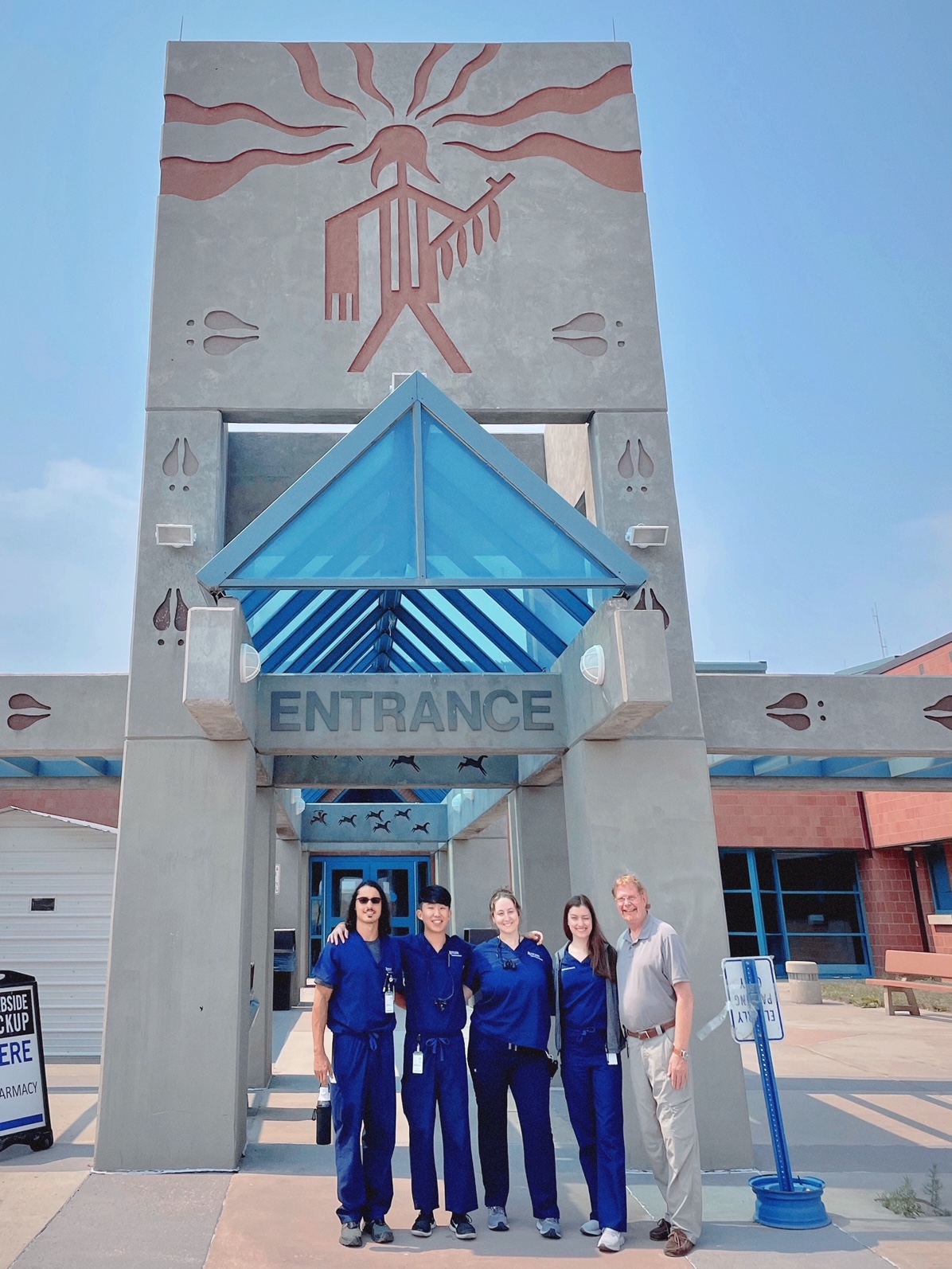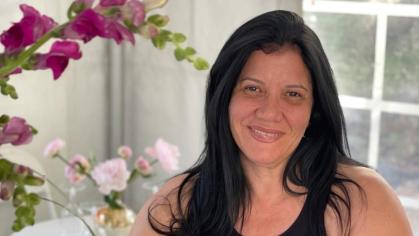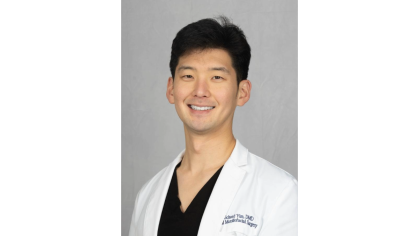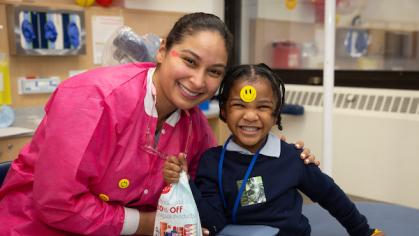RSDM Team Treats Native American Patients at South Dakota Clinic
 RSDM students outside the Indian Health Services clinic on the Pine Ridge Reservation in South Dakota. After their trip was cancelled last year due to COVID-19, RSDM students and faculty returned to the Black Hills of South Dakota recently to treat Native American patients at a federal Indian Health Services clinic. The Pine Ridge Reservation, where many patients live, is one of the poorest communities in the U.S., according to Dr. Robert Shekitka, who leads the annual trip, which has been held for nearly two decades. Residents are members of the Lakota tribe and rely almost exclusively on the clinic for care. Many suffer from tooth decay and other dental problems that are a result of poor nutrition and lapsed preventive care. Most patients treated by the RSDM students were there because of dental emergencies, said Dr. Shekitka. During the annual mission, third-year students filled in for Indian Health Services staff. Before the trip, they learn about Native American culture and customs so they can have a better understanding of patients. Students who participated are Adrian Rivera, Jonathan Kim, Elyse Abrams and Christina Degasperis. “They’re very proud of their culture and don’t want to have things imposed upon them or dictated to them,’’ said Dr. Shekitka. Although in recent weeks, South Dakota has had one of the highest rates of COVID-19 in the nation, cases didn’t seem prevalent when the RSDM team was there in July. “Things seemed normal. The hospital where we were working wasn’t overcrowded. There was no evidence of disease or morbidity,’’ explained Dr. Shekitka. For student Adrian Rivera, the trip was an opportunity to gain valuable experience honing his skills. “I was able to do more surgical procedures and assess and execute treatment plans,’’ he said. “I was able to put into practice the things I had learned and be more independent. It was a glimpse of what practicing dentistry as a professional is really like.’’ He also learned about providing care to patients who belong to a culture different than his own. “I had to meet them where they were,’’ said Rivera. “I learned how to ask probing questions and dig deeper, especially if someone seemed reticent and weren’t divulging a lot of information.’’ Many patients relied on emergency care because they weren’t used to regular preventive care or weren’t properly caring for their teeth and gums at home. “Some would come in and say, ‘I need a tooth pulled out,’’’ Rivera recounted. “They just assumed they needed an extraction. We tried to break that mindset and communicate how they could keep a healthy mouth by seeing the dentist every six months and brush and floss. The younger patients were more interested in brushing their teeth properly.’’ Dr. Shekitka praised the clinic staff for treating the students as colleagues but also offering guidance. “They make us feel like part of the staff, ‘’ he said. “They were very helpful to our students, in terms of education. They enjoyed the teaching aspect. I was very appreciative of that.’’
RSDM students outside the Indian Health Services clinic on the Pine Ridge Reservation in South Dakota. After their trip was cancelled last year due to COVID-19, RSDM students and faculty returned to the Black Hills of South Dakota recently to treat Native American patients at a federal Indian Health Services clinic. The Pine Ridge Reservation, where many patients live, is one of the poorest communities in the U.S., according to Dr. Robert Shekitka, who leads the annual trip, which has been held for nearly two decades. Residents are members of the Lakota tribe and rely almost exclusively on the clinic for care. Many suffer from tooth decay and other dental problems that are a result of poor nutrition and lapsed preventive care. Most patients treated by the RSDM students were there because of dental emergencies, said Dr. Shekitka. During the annual mission, third-year students filled in for Indian Health Services staff. Before the trip, they learn about Native American culture and customs so they can have a better understanding of patients. Students who participated are Adrian Rivera, Jonathan Kim, Elyse Abrams and Christina Degasperis. “They’re very proud of their culture and don’t want to have things imposed upon them or dictated to them,’’ said Dr. Shekitka. Although in recent weeks, South Dakota has had one of the highest rates of COVID-19 in the nation, cases didn’t seem prevalent when the RSDM team was there in July. “Things seemed normal. The hospital where we were working wasn’t overcrowded. There was no evidence of disease or morbidity,’’ explained Dr. Shekitka. For student Adrian Rivera, the trip was an opportunity to gain valuable experience honing his skills. “I was able to do more surgical procedures and assess and execute treatment plans,’’ he said. “I was able to put into practice the things I had learned and be more independent. It was a glimpse of what practicing dentistry as a professional is really like.’’ He also learned about providing care to patients who belong to a culture different than his own. “I had to meet them where they were,’’ said Rivera. “I learned how to ask probing questions and dig deeper, especially if someone seemed reticent and weren’t divulging a lot of information.’’ Many patients relied on emergency care because they weren’t used to regular preventive care or weren’t properly caring for their teeth and gums at home. “Some would come in and say, ‘I need a tooth pulled out,’’’ Rivera recounted. “They just assumed they needed an extraction. We tried to break that mindset and communicate how they could keep a healthy mouth by seeing the dentist every six months and brush and floss. The younger patients were more interested in brushing their teeth properly.’’ Dr. Shekitka praised the clinic staff for treating the students as colleagues but also offering guidance. “They make us feel like part of the staff, ‘’ he said. “They were very helpful to our students, in terms of education. They enjoyed the teaching aspect. I was very appreciative of that.’’



